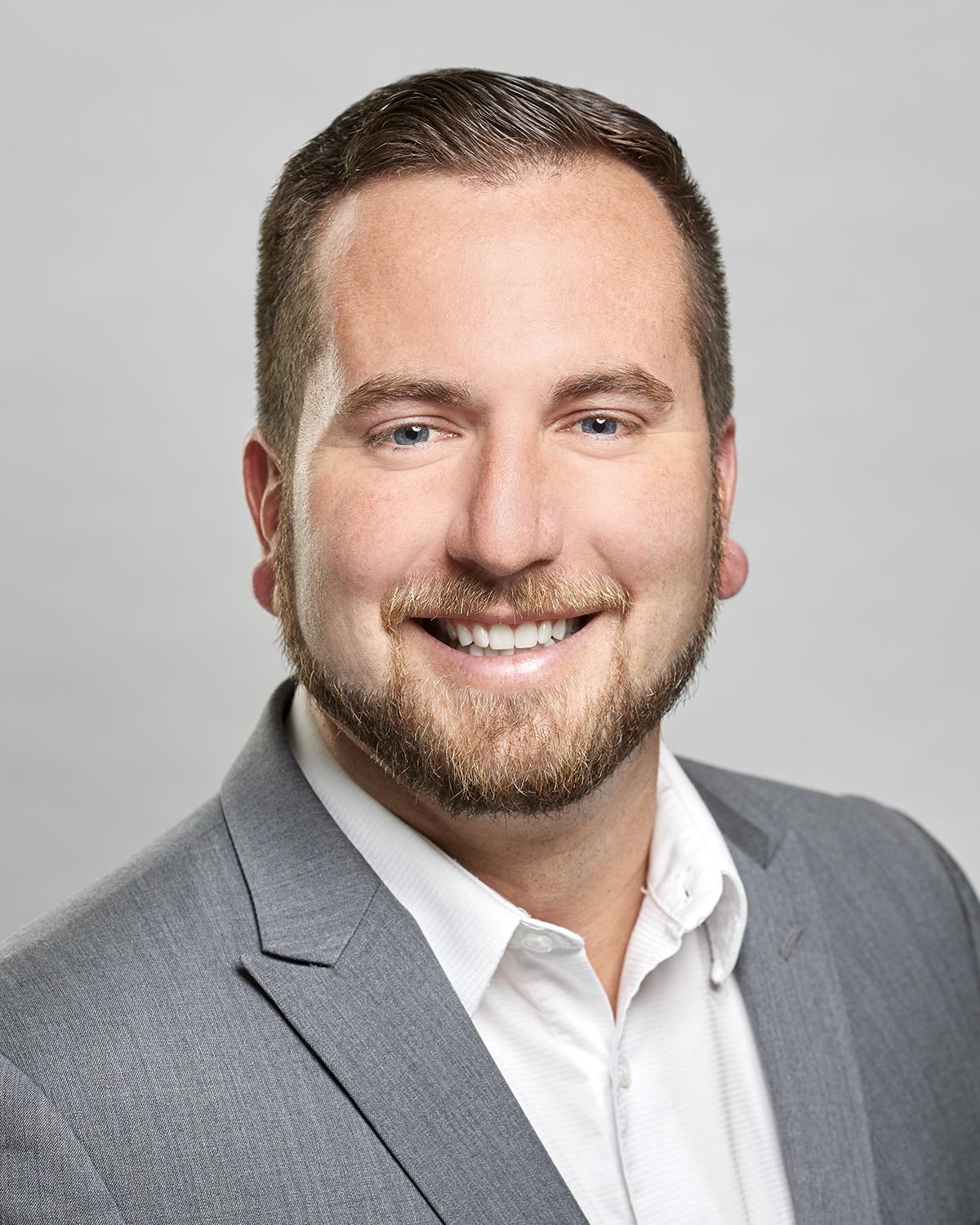Employee Spotlight: Chris Famolare

MilliporeSigma Employee Spotlight: Chris Famolare
As part of our employee spotlight series, we’re sitting down with Chris Famolare, global manager of sustainable operations, to learn more about how he’s driving sustainability at MilliporeSigma. The life science business of Merck KGaA, Darmstadt, Germany operates as MilliporeSigma in the U.S. and Canada.
How did you get your start with MilliporeSigma?
I received my degree a few months after the economic crash of 2008 – perfect timing, right? The company where I held internships the prior two summers was not hiring, so I went back to the boat dealership where I worked in high school. It was summer, they needed mechanics, and I needed to pay bills! During that time, I must have sent 100 resumes to various companies.
It was May 2009, when I met the facility supervisor for MilliporeSigma’s Massachusetts locations while attending an event. Eager to start my engineering career, I told him I was looking for employment, and coincidently he said, “My manager is looking for someone to help with energy audits.” We exchanged information, and a week later while under a boat making a fiberglass repair, I received a call for an interview with MilliporeSigma and subsequently accepted their offer. My role was to identify cost advantageous energy efficiency measures for MilliporeSigma’s sites and track progress as solutions were implemented. The rest is history.
Tell us about your background (where you grew up, went to school, your family, etc.).
I grew up in the suburbs of Boston, Massachusetts, about 30 minutes north of the city. I’m the oldest of four children. My father is a general contractor and my mother is a registered nurse specializing in homecare. My father’s side of the family is Italian and Irish and my mother’s side French-Canadian and Portuguese, so I grew up with a blend of traditions. In my free time I enjoy skiing, boating and projects around the house as well as dreaming up business ideas. I was fortunate to have attended the University of New Hampshire (UNH) and graduated with a Bachelor of Science in mechanical engineering.
Explain your role at MilliporeSigma.
My role has evolved significantly since the early days. I am currently the global manager of sustainable operations, responsible for developing and driving the sustainable operations strategy and programs for MilliporeSigma’s sites under its operational control. I focus on energy efficiency, renewable energy, water management and waste minimization at existing facilities, and I am involved in new construction planning. In addition, I also manage MilliporeSigma’s workplace electric vehicle charging infrastructure, environmental accounting SaaS platform, and consult on various topics such as energy procurement and greening of our fleet.
What is the most impactful change a facility can make to integrate sustainability?
It all depends on the type of facility. A research lab is drastically different than a distribution center, and an office can’t be compared to a clean room or manufacturing site – so I’ll provide three key elements to driving sustainability within a facility:
- Data is key – so take the time to really understand your data. Learn what everything means on your utility bills and how to manage cost and consumption. Implement a system to record your data and track progress against relevant KPIs.
- Engage the site management team and align the correct functions to act as a site-based steering committee. Integrate sustainability into the site’s culture and operations by talking about it whenever the opportunity arises.
- Ask a lot of questions and talk to everyone. People in manufacturing, in the labs and in the mechanical rooms have a wealth of knowledge about the building’s systems and processes – and are willing to talk. Find out if there is a pain point that can be addressed with a sustainability initiative – making someone’s job easier or more enjoyable.
Which MilliporeSigma site has undergone the most dramatic change in terms of its sustainable practices?
It wouldn’t be fair to choose just one, because our sites are so different in their function, size, opportunities and successes. So, I’ll take the opportunity to highlight three of our many successes – in no particular order.
Jaffrey, NH: In 2015, the team completed the construction of a biomass central heat plant, which replaced 14 oil fired boilers, eliminated the use of 400,000 gallons of oil per year, cut emissions by 3,481 tons of CO2, reduced fuel and maintenance costs by over $750,000 per year and supplied the entire site with reliable and renewable heat sourced from regionally sourced biomass in the form of wood chips. This project continues to be a showpiece for the company, drawing interest from thousands of people in the local community.
St. Louis, MO: We know that electric vehicles are a hot trend, and being the vibrant science and technology company that we are, our St. Louis campus recently installed 34 networked electric vehicle charging ports to meet the sustainability needs of our employees and visitors. This project effectively doubled our electric vehicle charging capacity in the United States and provides a free-of-cost charging option for employees and visitors.
Jigani India: Our site in Jigani, India was recently awarded First Place in the e-retail sector for sustainability at the 2019 SCALE Awards hosted by the Confederation of Indian Industry. In addition to reducing chiller energy use by 12% while production increased 22%, the site optimized the size of corrugated boxes used for shipping, eliminated secondary plastic packaging and decreased corrugated box scrap from 21 tons/year to zero tons/year by turning scrap corrugated boxes into packing filler material for shipping products.
At the company level, I am actively driving new renewable energy deals, including onsite solar, virtual power purchase agreements, land leases and the like, in order to work toward achieving one of our future targets – 50% reduction in Scope 1&2 greenhouse gas emissions by 2030, and carbon neutrality by 2040.
What trends are you seeing in the sustainability industry?
We are at a huge turning point! Companies across the globe are announcing their next set of environmental targets beyond 2020, and we are seeing companies announce ambitious goals that rarely existed before. Scope 3 emission targets and lofty renewable energy targets are becoming common place. Water is a deeper concern, and the tools available to measure impacts are becoming increasingly more robust. We’re also seeing a growing number of financial institutions taking a stance on climate-related issues – making decisions on how to invest in companies and technologies based on climate-related impacts. Electrification of vehicles has gained significant momentum with nearly all auto manufacturers offering an electric vehicle in their lineup – and savvy employers are preparing for the wave of EVs that will be entering their parking lots by installing infrastructure to support workplace charging while attracting and retaining talent. Food supply is a major sustainability topic as the world prepares for nearly 10 billion people by 2050. Sustainability is and must continue to drive innovation, as without innovation, progress toward reducing human impact and sustaining a growing planet will not be achievable.
What is one thing that few people know about you?
People who know me well know that I’ve always enjoyed figuring out how things work. I used to take apart my toys as a kid to see how they worked, then put them back together. I love working with my hands, whether that be rebuilding a transmission, installing an in-ground swimming pool or building a structure. When I was a kid, I’d make my own toys, including archery equipment and makeshift guitars. But, the one thing most people don’t know is that I built my first picnic table at age 5 out of scrap wood my dad had in the basement. I used my dad’s picnic table in the back yard for reference and built a scaled down model of it for my friends and me to use. I remember using leftover railing balusters for the frame and pieces of plywood for the top and seats. My mother enjoys telling that story to this day.
What has been your biggest accomplishment and why?
Aside from carving out a rewarding career, in my senior year at UNH, I was the mechanical design lead for the UNH CanSat team. I am still very proud of this because we were a first-year team and the only team to successfully complete the mission assigned to us – taking first place against prestigious schools! CanSat is a competition organized and sponsored by the American Astronautical Society (AAS), NASA Goddard Space Flight Center (GSFC), NASA Jet Propulsion Laboratory (JPL), US Naval Research Laboratory (NRL), Orbital Sciences Corporation, and the American Institute of Aeronautics and Astronautics (AIAA) in which teams are challenged to design and build a soda can sized satellite that performs various predefined tasks – mimicking a Lunar or Martian landing. So, can I claim to be a rocket scientist? Not quite, but it was one career path I considered.
How do you incorporate sustainability into your life outside the office?
At home, I do as much as possible to reduce energy and water use. When it comes to recycling, I leverage that as much as possible and explain to others in my building what can and cannot be recycled. A few years ago, I purchased a 100-year-old multifamily apartment building, and personally renovated it during nights and weekends, including insulating, replacing the original single pane windows with new double pane windows, LED lighting, learning thermostats, and low flow toilets and faucets. All the appliances were replaced with new high-efficiency equipment as well. I don’t have solar panels on the roof yet (holding off until the roof is replaced), but I did install solar with battery storage at my family’s summer cottage, which is completely off the grid!
If you could visit any place, where would it be and why?
There are several places I’d like to visit in present-day, such as Rome, the Philippines, Alaska and others, but I think it would be much more interesting to time travel to the past. It’s mind-blowing to think about how every decision people made in the past has led us to where we are today.

